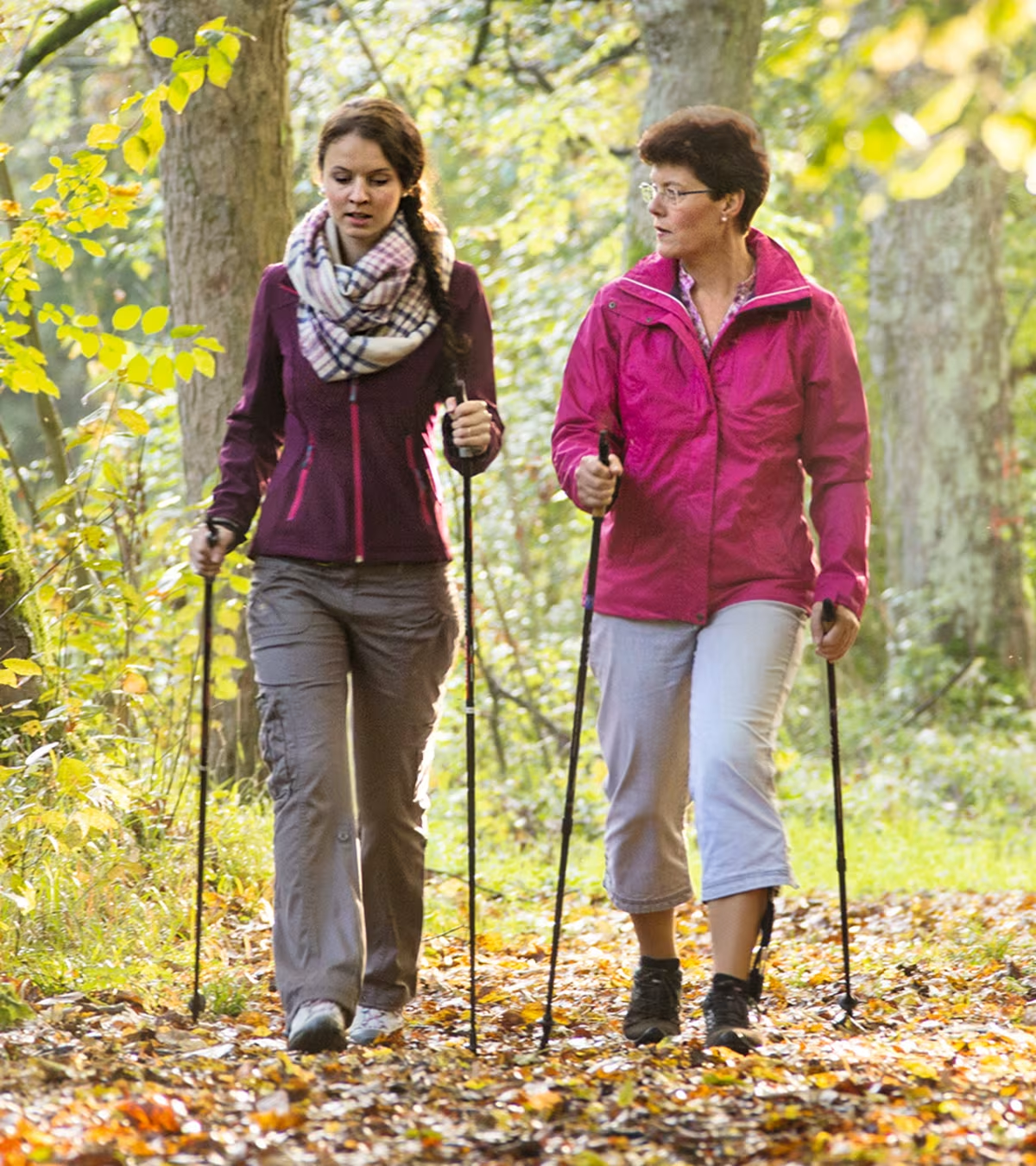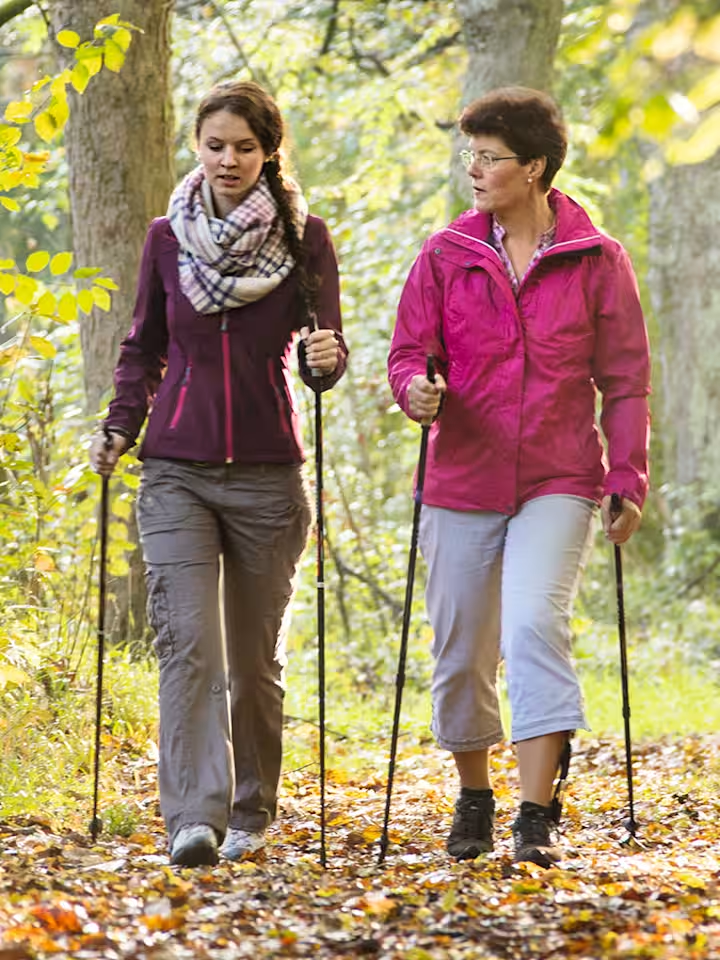Reclaiming an active life



Knee pain: causes, symptoms and prevention
If you are affected by knee pain, everyday life can feel very challenging. There are various different root causes for knee pain. It can be caused by an injury, an infection, or wear and tear to the knee joint. In addition, the risk of developing a knee complaint increases as we grow older or heavier, or if we engage in high-impact sports, or if we don’t walk properly.
Devices for knee pain
If your mobility is restricted because of knee pain, an Ottobock device can help to relieve pain and regain your freedom of movement.
What is knee pain?
In most cases, knee pain is caused either by an illness or by overuse. There are two different categories: acute knee pain, which flares up suddenly and is generally due to an external impact, and chronic knee pain, which often develops gradually, progresses slowly and can persist for a long time.
As the largest joint in the body, the knee is subjected to severe strain by improper or excessive movements. This makes it particularly susceptible to wear and tear and injuries. The knee is where the thigh bone (femur) joins the shin bone (tibia) and the kneecap (patella). The knee joint connects these bones with tendons and ligaments. Without our knees, we would not be able to move around naturally and flexibly in our accustomed way.
As a result, knee joint pain severely restricts us – walking, climbing stairs and engaging in sports become challenging activities. Knee pain can flare up in various different regions of the knee. Some patients report pain at the front of their knee; some feel it at the inner side, some at the outer side of the joint, and others just feel a general sense of pain in the whole knee area.

Causes of knee pain
Injury-related causes
Knee pain can have various root causes. Acute pain is often triggered by an injury to the knee joint as a result of excessive strain. This can lead to contusions, sprains and pulled muscles around the knee. A meniscus injury or a muscle, cruciate ligament or tendon tear can also trigger acute pain. These direct or indirect knee joint injuries can occur as the result of an accident or fall, or in connection with a sport that places (excessive) stress on the joints. In such cases, the symptoms are immediate and take the form of knee pain when you climb stairs, bend your leg or flex the joint.
If it’s only a minor injury and you rest your leg and care for it properly, the pain can often disappear by itself after a day or two. Devices such as Ottobock orthoses and supports help to stabilise and protect the knee. Using this approach, suitable orthoses support the regeneration process.

Chronic causes
Chronic knee pain, on the other hand, often results from wear and tear to the knee joint or from an infection in the knee. It develops slowly over the course of months or years, with pain and symptoms increasing very gradually. The pain in the knee joint then occurs when you engage in sports or put too much strain on your knee. Symptoms may disappear at times, only to reappear suddenly when you overexert yourself.
If you experience persistent knee pain over the course of several weeks when walking or climbing stairs, or when bending or flexing your knee, you should definitely consult your doctor. Your doctor can help you determine the root cause of the pain and initiate suitable treatment for relieving the symptoms. Orthoses can also be used to treat knee pain caused, for example, by osteoarthritis of the knee. In such cases, they can provide targeted support for stabilising and mobilising the knee joint. They also help to relieve pain. An O&P professional can help you find the appropriate orthosis for your symptoms.

Symptoms of knee pain
Knee pain can present with a wide range of symptoms. With this in mind, you should listen to your body closely and try to answer the following questions: Where exactly is the pain? How intense is it? Does it persist at night, when resting? Or does your knee hurt when you get out of bed and stand up? Does your knee hurt when you’re out running or when you get back from a run? Does it also hurt when you walk normally? Is your knee painful when you climb stairs, or when you bend or flex your leg? Does your knee feel hot? Is it red or swollen? Do you have a feeling of instability in the knee?
For a reliable diagnosis, you should always consult a doctor. They will ask you questions to establish your medical history and find the root cause of your pain. Where and when does the pain occur? What sort of pain is it? Could a knee joint injury or surgery from the past be part of your current problems?
In general, your doctor will then examine you more thoroughly and check your knee for swelling, inflammation and effusions. In order to pinpoint exactly where the pain is coming from, they may perform the Steinmann test on your meniscus or the drawer test on your cruciate ligaments.
Your doctor may also prescribe further tests to corroborate the diagnosis. Various diagnostic procedures can be used to diagnose injuries to ligaments, meniscus and the knee joint. These include ultrasound, X-rays, MRI (magnetic resonance imaging) and CT (computer tomography). The results of these tests can help to reveal the cause of your knee problems.
Overview of common causes of knee pain
Advice and devices for knee conditions
Supports and knee orthoses
There are various ways to ease the strain on affected knee joints and prevent knee pain from developing. Does your knee hurt when you go for a walk or a leisurely hike? Your walking technique or your shoes may be the culprits here. But walking downhill can also trigger pain, because this significantly increases the load on your knee joints. In order to prevent knee pain from developing, you can perform special exercises to optimise your gait and strengthen your leg muscles. Good shoes are also very important! A support or knee orthosis can also be used to reinforce your knee joint, especially if symptoms and pain have already developed. These orthopaedic devices take the load off your knee and give the joint more stability. This provides a noticeable measure of pain relief and, in some cases, can even restore your freedom of movement.

Movement and sports
Depending on your diagnosis, it may be advisable to rest the joint or strengthen it by exercising it more on a daily basis. If performed regularly and mindfully, exercise and sports that do not exert undue strain on the knee joints will not only keep you fit and healthy but will also strengthen your knee and make it less prone to strain. Gentle exercise means going for a swim or stroll, Nordic walking or practising certain yoga positions. In our Genu Move programme, you’ll find special exercises that you can also practise in the comfort of your own home.

Healthy, balanced nutrition
Depending on your diagnosis, nutrition can play a role in helping to improve your condition. In any case, you should avoid becoming overweight and lose excess weight if necessary. Regular exercise that’s gentle on your joints can also help you achieve this goal. In addition, you should focus on balanced nutrition with plenty of fruit and vegetables, healthy carbohydrates and very little sugar. Try following the 10 rules developed by the German Nutrition Society (DGE). These are designed to help you choose a healthy, balanced diet that will also increase your sense of well-being. By going easy on your knee and combining exercise and sports with a healthy lifestyle in an ideal way, you will be able to regain much of your quality of life despite your knee problems.

Back to everyday activities: three steps to an Ottobock orthosis
- Here you’ll find an overview of all the orthoses and supports that could potentially help you. Take the list with you to your next doctor’s appointment.
- Talk to your doctor about which orthosis is best suited to your symptoms and condition. Your doctor can then write you a prescription for the appropriate orthosis.
- Take your prescription to a medical supply company. They’ll give you your new orthosis and adjust it to fit your exact body measurements.
